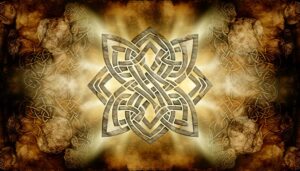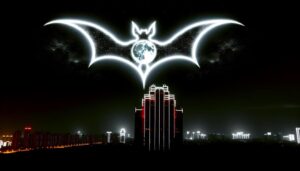What Is the Celtic Symbol for Dad and Daughter?
Celtic symbols, deeply rooted in the rich cultural heritage of the ancient Celts, offer meaningful ways to celebrate the father-daughter bond. Among the most significant are Celtic knots, which represent eternal love and unbreakable bonds.
The Trinity Knot and the Claddagh are particularly popular, symbolizing interconnectedness, unity, and mutual respect. These symbols are characterized by their intricate, continuous designs, epitomizing the cyclical nature of life and relationships.
The Celtic Tree of Life also beautifully encapsulates family strength and growth. Discovering the history and significance of these symbols offers deeper insights into their timeless appeal.
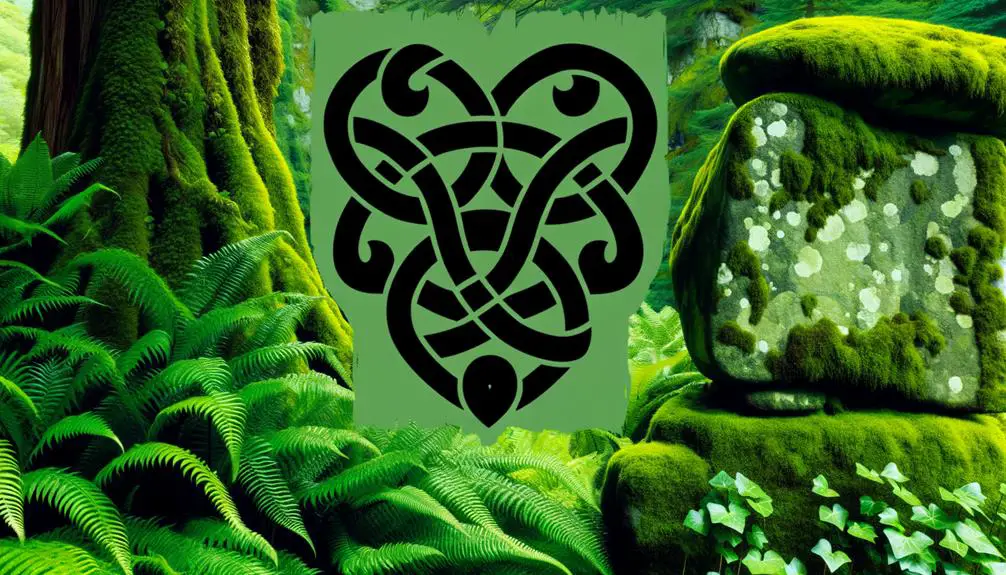
Key Takeaways
- Celtic knots symbolize eternal love and unbreakable bonds, ideal for representing the father-daughter relationship.
- The Claddagh, with its heart, hands, and crown, signifies love, loyalty, and friendship, fitting for a father-daughter bond.
- The Trinity Knot, with its three interlocking loops, epitomizes unity and the eternal connection between a father and daughter.
- The Celtic Tree of Life represents growth, strength, and the enduring bond between family members, including father and daughter.
- The Ailm, symbolizing strength and resilience, is another meaningful Celtic symbol celebrating the father-daughter relationship.
History of Celtic Symbols
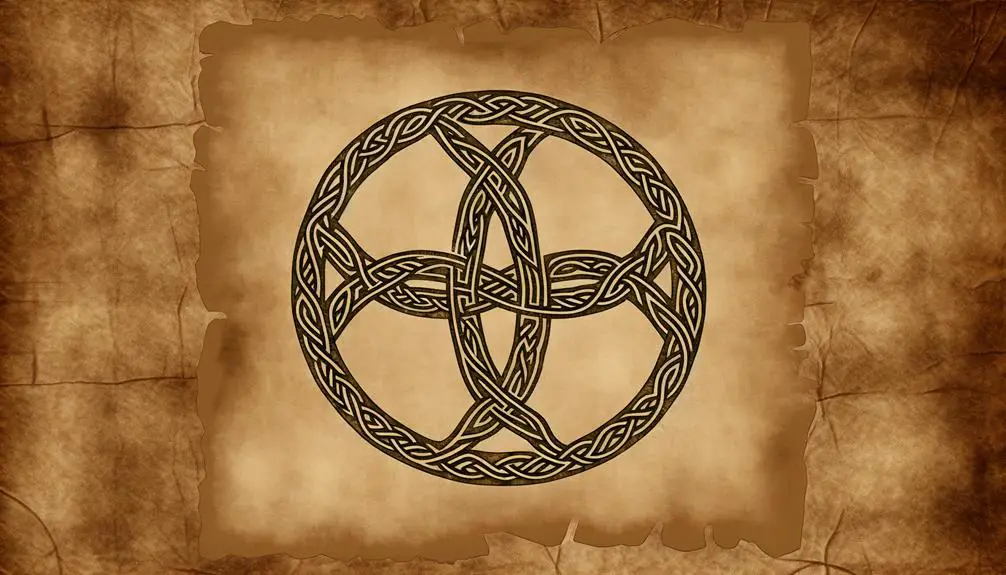
The history of Celtic symbols is deeply rooted in the rich cultural heritage and spiritual traditions of the ancient Celts, dating back to the Iron Age. These symbols were not merely decorative but held profound meanings, often reflecting elements of nature, spirituality, and the interconnectedness of life.
The Celts, who inhabited regions across Europe, including what is now Ireland, Scotland, and Wales, used these symbols in various facets of life, from religious ceremonies to warfare. Artifacts adorned with intricate designs have been discovered in archaeological sites, revealing their significance in daily and ceremonial contexts.
Understanding Celtic symbols requires appreciating their role in conveying complex ideas, emotions, and societal values, underscoring the Celts' sophisticated system of symbolism.
The Celtic Knot
The Celtic Knot is an intricate pattern often found in ancient Celtic art. It serves as a profound symbol of eternal love and the unbreakable bond between individuals. Its continuous loops signify interconnectedness and unity, embodying the timeless relationship between a father and daughter.
Historically, these knots have been utilized in various cultural artifacts, emphasizing their significance in representing enduring connections.
Eternal Love Representation
Intricately interwoven, Celtic knots are powerful symbols of eternal love and unbreakable bonds, often chosen to represent the enduring connection between a father and daughter.
These knots, devoid of beginnings or ends, epitomize the concept of infinity, resonating deeply within Celtic culture where they were used as potent symbols in ancient manuscripts and stone carvings.
Historically, Celtic knots have been revered for their intricate designs which symbolize the eternal cycle of life, love, and nature.
Their continuous loops make them a fitting representation of the perpetual and steadfast love shared between a father and daughter, underscoring the timeless and immutable nature of their relationship.
This profound symbolism makes the Celtic knot a cherished emblem of familial love and continuity.
Interconnectedness and Unity
Embodying the essence of interconnectedness and unity, Celtic knots illustrate how various elements of life are woven together to create a harmonious and inseparable whole. Rooted in ancient Celtic culture, these intricate designs symbolize the continuous cycles of life and the eternal bond between individuals.
Specifically, the Celtic knot can epitomize the profound connection between a father and daughter, reflecting their intertwined lives and unbreakable relationship.
Key aspects of Celtic knots include:
- Endlessness: The knots have no beginning or end, symbolizing eternity.
- Complexity: Intricate patterns reflect life's multifaceted nature.
- Symmetry: Balanced designs represent harmony and stability.
- Symbolism: Each knot variation holds unique meanings, often tied to family and heritage.
Understanding these elements enhances appreciation of their cultural and historical significance.
Father-Daughter Bond
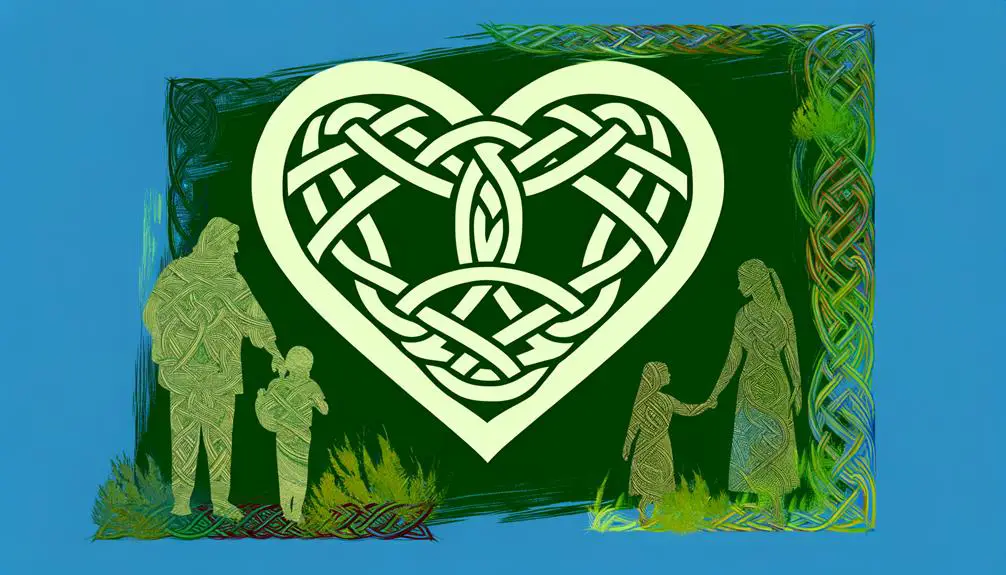
The father-daughter bond, much like the intricate patterns of Celtic knots, symbolizes an unbreakable emotional connection that transcends time.
This relationship is characterized by shared life lessons and experiences that contribute to the growth of mutual respect.
Historically, Celtic traditions have celebrated such bonds, recognizing their profound influence on personal and communal well-being.
Unbreakable Emotional Connection
How does the Celtic symbol for the father-daughter bond encapsulate the profound, unbreakable emotional connection that has been revered in Celtic culture for centuries?
This symbol, often depicted as intertwined knots or spirals, represents the eternal and interwoven nature of familial relationships. Historically, the Celts valued the strength of family ties, viewing them as the bedrock of their society.
Key elements of this symbol include:
- Interconnectedness: Reflecting the continuous and enduring relationship.
- Eternity: Signifying an unending bond that transcends time.
- Strength: Illustrating the resilience and support inherent in the father-daughter relationship.
- Unity: Emphasizing the harmony and unity within the family unit.
These aspects capture the essence of an unbreakable emotional connection, deeply rooted in Celtic traditions and values.
Shared Life Lessons
In the rich tapestry of Celtic culture, fathers impart wisdom through shared life lessons, reinforcing the profound and enduring bond with their daughters. This transmission of knowledge encompasses various aspects of life, from moral values to practical skills, ensuring a holistic upbringing. The table below highlights some key life lessons passed from Celtic fathers to daughters:
| Lesson Type | Description |
|---|---|
| Moral Values | Teaching honesty, integrity, and respect for nature and community. |
| Practical Skills | Instructing in traditional crafts, farming techniques, and survival skills. |
| Cultural Heritage | Sharing stories, legends, and Celtic traditions to preserve their identity. |
Through these lessons, the father-daughter relationship is strengthened, fostering a deep connection rooted in shared experiences and cultural heritage.
Mutual Respect Growth
Fostering mutual respect between fathers and daughters is a cornerstone of the Celtic familial bond, deeply ingrained in their cultural and historical practices. This respect is not merely a modern construct but a continuation of traditions passed down through generations. The father-daughter relationship in Celtic culture is characterized by:
- Shared storytelling: Passing down wisdom through myths and legends.
- Rituals and ceremonies: Celebrating milestones and achievements together.
- Craftsmanship: Engaging in shared activities like weaving or woodwork, fostering collaboration.
- Spiritual guidance: Fathers imparting moral and spiritual values rooted in Celtic beliefs.
These practices cement a bond where mutual respect thrives, reflecting a deep-seated cultural ethos that values intergenerational connection and personal growth.
Symbolic Meanings
The Celtic symbol for dad and daughter, often represented by intertwined knots or the Claddagh, carries profound meanings that reflect the deep bond, loyalty, and eternal connection inherent in this relationship.
Intertwined knots, a hallmark of Celtic art, symbolize the unbreakable and everlasting bond between father and daughter, signifying unity and continuity.
The Claddagh, featuring a heart (love), hands (friendship), and crown (loyalty), embodies these core values within familial ties.
Historically, these symbols trace back to early Celtic tribes, who revered familial relationships and intergenerational connections. They believed such motifs not only honored their ancestors but also imparted blessings of protection and guidance, enriching the father-daughter dynamic with cultural depth and historical resonance.
Popular Designs
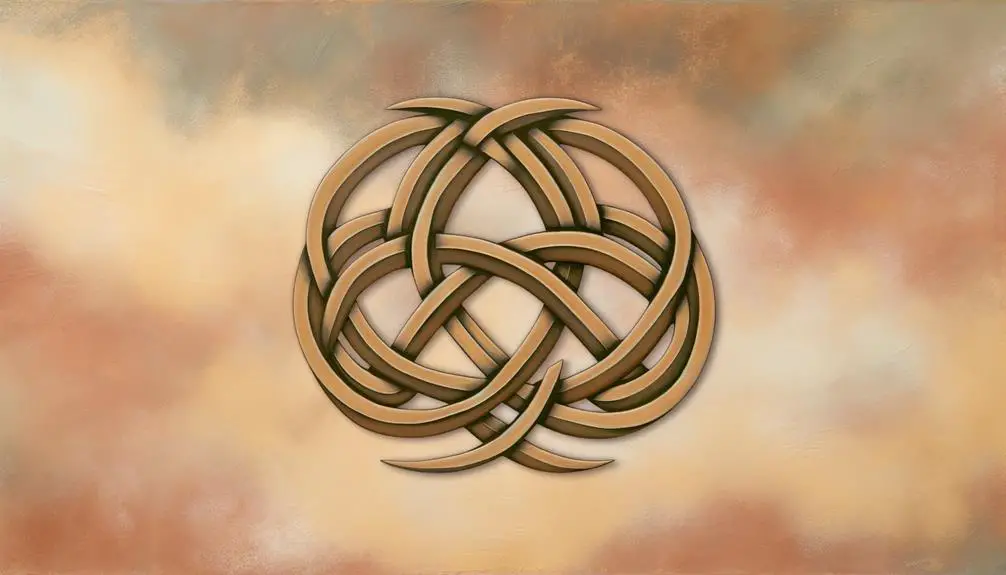
Building upon the rich symbolic meanings, popular Celtic designs for dad and daughter often feature intricate knotwork, the Claddagh, and the Tree of Life, each offering a unique visual representation of their enduring bond. These designs are deeply rooted in Celtic tradition and carry profound cultural significance.
- Knotwork: Symbolizes the intertwining of lives, representing the unbreakable connection between father and daughter.
- Claddagh: With its heart, hands, and crown, it signifies love, loyalty, and friendship.
- Tree of Life: Represents growth, strength, and a connection to ancestry, embodying the shared lineage.
- Celtic Cross: Combines Christian and pagan elements, symbolizing unity and the crossing of paths.
These symbols not only honor heritage but also celebrate the special relationship they represent.
Modern Interpretations
How have contemporary artists reimagined traditional Celtic symbols to resonate with modern sensibilities while preserving their historical and cultural essence?
Modern interpretations often involve adapting classic motifs like the Celtic knot or Tree of Life to encapsulate the bond between father and daughter. By integrating personalized elements such as initials or birthstones, these designs maintain their ancient significance while offering individual relevance.
Artists emphasize clean lines and minimalist aesthetics to align with current tastes, yet they retain the intricate interlacing characteristic of Celtic art. This blend of old and new ensures that the symbols remain meaningful, celebrating the enduring connection between parent and child while fitting seamlessly into contemporary life.
This way, the cultural heritage is honored and kept alive in a modern context.
Choosing the Right Symbol
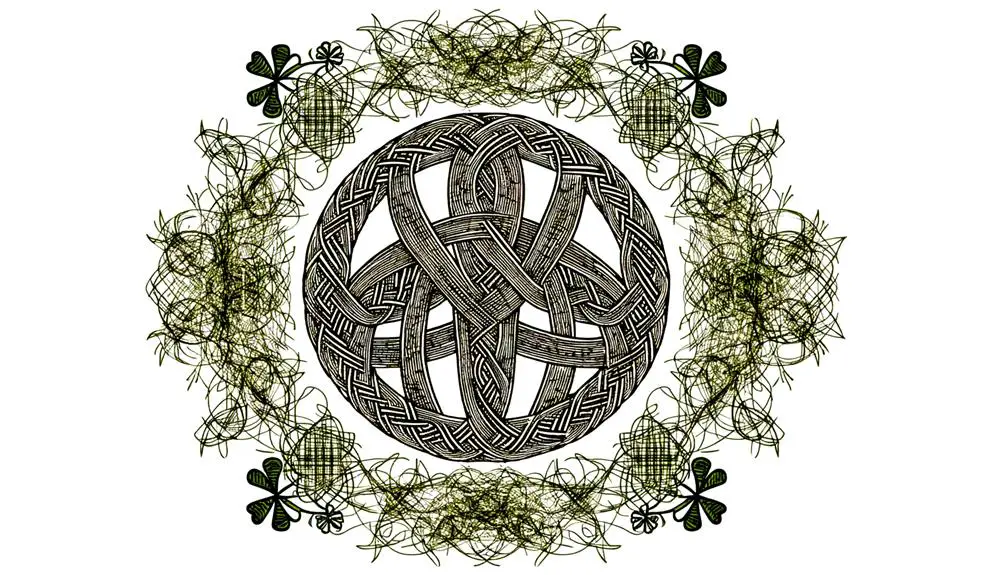
Selecting an appropriate Celtic symbol to represent the bond between father and daughter requires an understanding of both the historical significance and the intricate meanings behind traditional motifs. These ancient symbols carry deep cultural contexts that reflect values, relationships, and beliefs.
When choosing a symbol, consider the following:
- Trinity Knot (Triquetra): Symbolizes eternal love and the interconnectedness of life.
- Claddagh: Represents love, loyalty, and friendship, fitting for familial bonds.
- Celtic Tree of Life: Signifies growth, strength, and a connection to ancestors.
- Ailm: A symbol of strength, endurance, and resilience, embodying the protective nature of a father.
Each symbol offers a unique perspective on the cherished father-daughter relationship, grounding modern connections in rich Celtic heritage.
Conclusion
The enduring legacy of Celtic symbols, particularly those representing the father-daughter bond, offers a profound tapestry of historical and cultural significance.
Much like the intricate weave of a Celtic knot, these symbols encapsulate unbroken connections and eternal love.
For instance, the Trinity Knot, often chosen to symbolize familial bonds, mirrors the perpetual cycle of life, death, and rebirth, echoing the timeless nature of the father-daughter relationship.
This rich symbolism continues to resonate in contemporary interpretations and designs.




